I used to not enjoy the Ducati Panigale V4 S when I rode the first-generation version a couple of short years back. For two years running, to the song of superbikes sold is a Panigale that the Panigale has become the best selling superbike in the marketplace, I never got on with it. In our head-to-head test of the Panigale V4 S along with the Aprilia RSV4 RF, I noted the Desmosedici Stradale 1103cc 90º V4 is an absolute monster of an engine. It was wrapped in a chassis to offer any feedback to the rider. Where the RSV4 could carve a racetrack with scalpel-like precision, the Panigale was like a butcher knife, chopping up swaths of the racetrack with brute power rather than agility and precision. Sure it could set a quick lap, but seeking to replicate that performance within the span of a 20-lap race could be next to impossible.
Shane Turpin, our ringer for its Aprilia vs. Ducati test, consented — and thus did the stopwatch. While he pulled the fastest single lap time of the test on the Ducati, he had been just a few tenths slower on the Aprilia. More to the point, he had been consistent on the Aprilia, stating he wouldn’t have a problem repeating his lap for the course of a race — no way could he take action on the Ducati. For a company known for building some of the most exact frames and lid motorcycling in all, it appeared as though Ducati had lost its way.
Then I managed to throw a leg on Ducati’s World Superbike homologated Panigale V4 R and its own revised chassis to accompany the 1000cc version of the Stradale V4. Though my time aboard the R version has been short, there was a definite distinction in the chassis, because it provided better agility, feedback, and general handling. Wouldn’t it be good if this chassis was wrapped around the bigger engine of the S model?

Ask And You Shall Receive
Apparently, my opinions were mirrored by many Ducati customers, racers, and yes, even fellow journalists across the world (person, it’s great to know I have not completely lost it). Ducati listened with the new, this and Panigale V4 and V4 S. The design brief was simple: make the new Panigale V4 easier to ride, less demanding, and quicker. Simple, right? On the surface it’s easy to mention the motor remains — and the new version is essentially the big engine at the R framework, unchanged — but there is more to it than that. Let us break down the specifics.
Aerodynamics
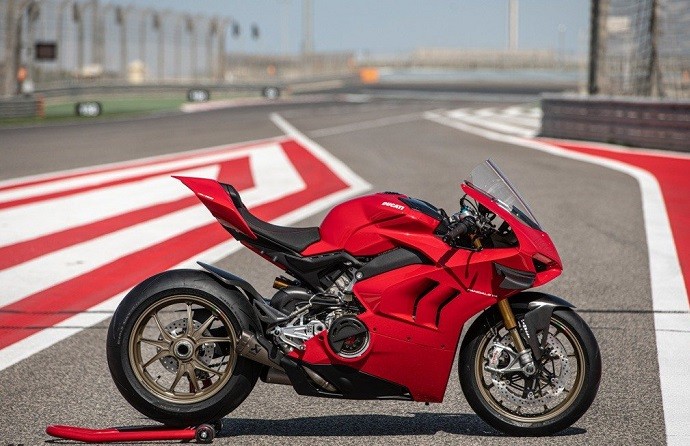
The R model fairings have been adopted on the models. Creating a superbike more easy to ride part in reducing rider fatigue, and this new fairing includes as standard a 34mm windscreen bundle. The widest point of the front fairing (approximately the points 1-inch supporting the headlights) is currently 15mm wider than before, with all the side fairings 38mm wider on each side. The web result is a broader and taller bubble for the rider to tuck too, reducing fatigue from wind buffeting on the head, neck, and shoulders.
Adopting the R version fairings provides the extra benefit of pulling hot air away from the bike. Whereas the oil cooler sees a 16% increase in airflow, airflow through the radiator has improved by 6%.
Of course, the most obvious addition to the new V4 is the winglets of the R model. Designed in conjunction with Ducati Corse, the manufacturer’s racing division, Ducati states the wings provide up to 37 kg (81 lbs) of downforce in 300 kph (186 mph), which subsequently helps provide greater mechanical grip to decrease the tendency to wheelie and keep the front end from”floating” at high speeds. Granted, feeling the ramifications and reaching those sorts of rates is hard to perform at most racetracks, but our media tests at the Bahrain International Racetrack would actually allow us to experience their consequences. More on that later.
Frame
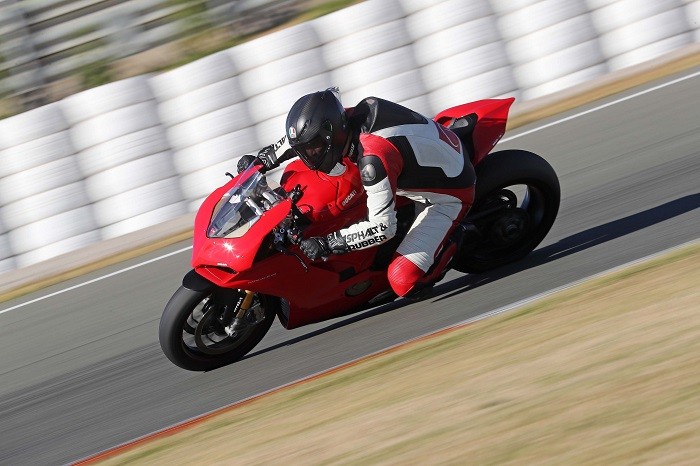
Adding more sense and chassis compliance is a tricky matter, one that Ducati got incorrect (although the business might never admit as much) by making the original V4 frame too stiff and rigid. The R frame, which is currently viewed on the non-R models, is derived from World Superbike and has cleansing measures (holes( basically ) near the front headstock. The outcome is a reduction in stiffness that is braking and a decrease in torsional stiffness. Letting the chassis bend and move is what translates into texture and comments from the wheels.
Chassis
But just changing a framework goes so far. The real news with the bicycle is that the extreme chassis overhaul that sees the overall center of gravity (CoG) growth by 5mm. This is the net outcome of increasing the front part of the framework (or dropping the forks inside the triples) 4mm. While the suspension links are 5mm shorter the shock, in the back itself grows longer by 2mm.

To assist further provide more sense, the Panigale currently gets softer springs compared to previously, with more spring preload dialed in. Ducati provided several graphs and charts to describe the net effects of the installment, but what it boils down to is your softer spring allowing more of this journey to be used, and much more of the comments to be directed to the riders, resulting in better feel at the controls at all lean angles, more compliant bump absorption, and enhanced grip both entering and exiting corners, even as the milder springs are soaking road imperfections that the tire might otherwise need to manage.
Rider Aids
The truth of the matter, hate’em or love’em is we are in an era where electronic equipment is needed by superbikes and well. Not to go quicker, but to keep us safer. For all but the racers out there, riding a bike powerful and this fast without a safety net is a recipe for disaster, although purists might cry foul. And having the ability to remain upright and replicate our laps consistently is a big deal. The advancements in rider aids, broadly speaking is just nothing short of amazing, and a lot of that is due in part. In this Panigale V4’s case, the package of riders aids largely remains; this would be to say you still get:
Cornering ABS
Ducati Slide Control
Ducati Wheelie Control
Ducati Power Launch
Engine Brake Control
Ducati Electronic Suspension (S version only)
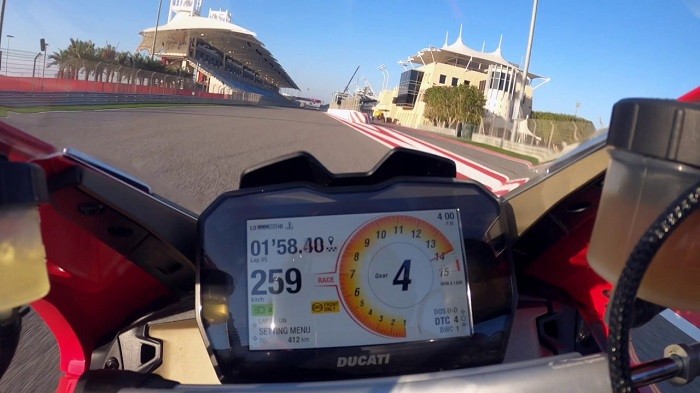
Ducati Traction Control and Quick Shift Up/Down are also back, but this time get EVO2 updates, meaning the shifts are more rapid more than 10,000 rpm, while TC is more finely calibrated to react faster and simpler to reduce the amount of allowable oscillation. Simply put, that the calibration is supposed to provide better acceleration.
Engine Mapping
Seeing as how a significant goal for the V4 was supposed to make it easier to ride, the motor mapping was further tweaked by Ducati. It sounds simple on the outside, however, there is nothing easy about it. Ask former Ducati Corse engineer that switched his attention about one year ago to the production side, Carlo Ricci Maccarini. Using his experience from tuning Ducati MotoGP and World Superbike platforms, both he and his team further described the torque gradient on the new V4 for each throttle position, taking into consideration different requirements (TC setting, Ride Mode, etc.). The purpose was to create a connection between the rear and hand wheel linear.
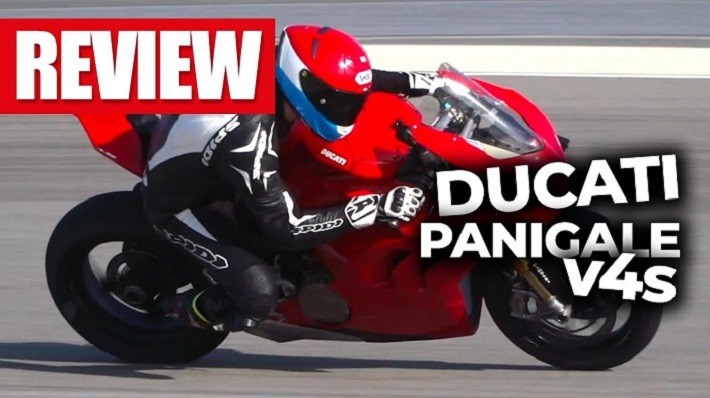
Lastly, because the 1103cc V4 is currently setting out, torque is limited electronically in second and the first gear, and less so in the third party, to help provide controllable power to the earth. The V4 is unleashed from equipment onwards. Already, I could see this being a target of derestriction for aftermarket ECU tuning companies…
Ride Impressions
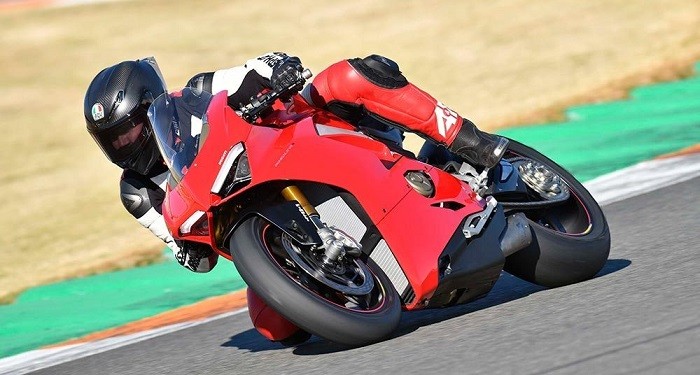
In 3.4 miles, with 15 turns, two long straights, and one really long front straight, the Bahrain International Circuit is among the few tracks in the world where it’s possible to allow a bike like this sing in top gear. Located in the heart of the Middle Eastern desert, it’s a great place for a media launch in the winter, since it only rains in the area approximately ten times a year.
As it turned out, our journey day was among the 10 times! Thus, getting to push the new V4 S, and its digital Öhlins suspension, to the limitation, would have to wait until another time, but Pirelli was able to salvage the situation by bringing rain tires, allowing us to test a different element of the bike: Ducati’s claim that it’s a lot easier to ride.
With rain tires mounted (though incorrectly balanced from the local tire vendor) and traction control set to level 7 (of 8), it was off to go find out the Bahrain circuit from the pouring rain. Surprisingly, the V4 was a dance partner. Using its TC high, the danger of excessive wheelspin in these moist conditions was nill, and the power delivery I was looking for as I heard my rights was also there to greet me. As far as first sessions go on a new track with a new bike — and with my memory of the V4 S becoming relentless — this was not the experience I was expecting. It had been…easy. But I would withhold judgment.
As the sessions continued and I got a much better feel for the course design, I could begin dedicating more time to the bike itself, and while it’s difficult to state with good certainty because of the moist conditions, confidence and communication from the chassis were a step above what I recall of its predecessor, and even though traction control was bolstered up almost to maximum, I was never tempted to lower it. The drive and acceleration were more than enough to keep me satisfied, and the thought of risking the potential to high side myself back and lowering the TC didn’t seem appealing. In reality, exiting the corner on the front two streams of water were flowing causing the back since the V4 attempted to unleash all of its own power to the 41, to aquaplane. With the throttle at a full stick and TC set high, I could keep it trapped over the confident that, despite the aquaplaning, the back wasn’t going to get out of control.

Because the Ride Mode was set to Street, the one adjustment I did create was altering the power delivery inside Street Mode into the Track setting (the middle setting. Race being the most competitive ). All 3 modes give you power, but Track provides a linear and direct link between your hand and the tire. This cured the slight hesitation coming back throttle on corner exit, which has been particularly helpful down the front straight as the V4 S is readily able to click on 6th gear and unwind — speedometer climbing north of 290 kph — before going blank at 300 kph and beyond (it is possible to thank lawyers for that). All this, mind you.
Remember the bit about the fairings making a bigger bubble for the rider? In the case of the Panigale V4 S, it’s all true. Despite the scenery whizzing past me at a quick speed north of 300 kph (signaled ), the distance inside the bubble was calm, and even as I sat up to brake (easily done even at those speeds as a result of the 330mm discs and Brembo Stylema calipers), the windscreen still melts enough air around and over me to not feel like a sail. That’s more than I could say about any other machine I’ve been able to go this on.
Then there will be the wings. My stance on tails is it’s difficult to really judge the effectiveness of winglets, especially if you don’t possess a bike to ride back. Where I sensed their consequences in the case of the V4 S, I may have found a scenario. As mentioned earlier the wheels weren’t properly balanced when the rain tires were set up, which makes for a horrible vibration in speed. Combine that with all the wet surfaces, and I anticipated the Ducati front end float and to wander at high speeds.

It felt to me like the tire was being gently pushed to the ground. Despite the vibrations, the bicycle was tracking straight and accurate. I have to imagine they assisted, although I wait to give whole credit to the tails. Granted, 300 clicks is a high rate of speed to check something like this, therefore Ducati will even sell a block-off plate for owners who never anticipate going that fast, street riders that do not want the extra protrusion, or clients who simply don’t like how they seem.
Complaints?
A few, yeah. Ducati has a habit of fitting pegs on its motorcycles and the new V4 S is no exception. The conditions caused my feet to slip several times off under hard braking, although I do have a problem with foot slippage. I wouldn’t mind a room to scoot back and tuck my arms . Since it is, my knees touch in a tuck. Another gripe comes courtesy of Jorge Lorenzo: The fuel tank contour doesn’t provide contact points that are hard to genuinely plant your knees during hard cornering.

This might be the cheapskate in me, knowing I will never have the ability to pay for a motorcycle like this on my MO salary, but there’s practically nothing on the Panigale V4 the home mechanic could fix themselves. Screws, nuts, and fasteners are largely hidden, which is a large pain as you’ll need to access them to take covers off. I imagine even something as simple as an oil change is a PITA. Then again, if you’re able to afford $ and the $21,995 28,395 for the Standard or S models I assume you’re getting somebody else to do the work for you.
Final Thoughts
My big takeaway after a full day of riding the Ducati Panigale V4 S in the rain is that it seems like Ducati answered the critics, like me, by making the brand new bike easier to ride than the old. Until we’re able to correctly flog one in the dry, Contemplating our soggy riding requirements, however, I will have to hold off judgment. Or you could read a review from a European moto-journo — it was bright and fine on their ride day.

Maybe this is better placed as a complaint, but it is fitting in the Final Thoughts section. I would be pissed if I owned the first-gen Panigale V4. Pissed because the new V4 is good, and that’s only from riding it in a moist and soggy racetrack. If these impressions remain after dry testing, I would say owners may wish to think about offloading the old.
| 2020 Ducati Panigale V4 Specifications |
|---|
| MSRP | $21,995, $28,395 (S Model) |
| Engine | Desmosedici Stradale 90° V4, counter-rotating crankshaft, 4 Desmodromic timing, 4 valves per cylinder, liquid-cooled |
| Displacement | 1103 cc |
| Bore x Stroke | 81 x 53.5 mm |
| Compression Ratio | 14.0:1 |
| Power | 214 hp at 13,000 rpm (claimed) |
| Torque | 91.5 lb-ft. at 10,000 rpm (claimed) |
| Fuel injection | Electronic fuel injection system. Twin injectors per cylinder. Full ride- by-wire elliptical throttle bodies. Variable length intake system |
| Exhaust | 4-2-1-2 system, with 2 catalytic converters and 2 lambda probes |
| Gearbox | 6 speed with Ducati Quick Shift (DQS) up/down EVO 2 |
| Primary Drive | Straight cut gears; Ratio 1.80:1 |
| Ratio | 1=38/14 2=36/17 3=33/19 4=32/21 5=30/22 6=30/24 |
| Final Drive | Chain; Front sprocket 16; Rear sprocket 41 |
| Clutch | Hydraulically controlled slipper and self-servo wet multiplate clutch |
| Frame | Aluminum alloy “Front Frame” with optimized stiffnesses |
| Front Suspension | Fully adjustable Showa BPF fork. 43 mm chromed inner tubes. (S Model: Öhlins NIX30 43 mm fully adjustable fork with TiN treatment. Electronic compression and rebound damping adjustment with Öhlins Smart EC 2.0 event-based mode). 4.7 in travel |
| Rear Suspension | Fully adjustable Sachs unit. Aluminum single-sided swingarm. (S Model:Fully adjustable Ohlins TTX36 unit. Electronic compression and rebound damping adjustment with Öhlins Smart EC 2.0 event-based mode. Aluminium single-sided swingarm). 5.1 in travel |
| Front Wheel | 5-spokes light alloy 3.50″ x 17″ (S Model: 3-spokes forged aluminum alloy) |
| Rear Wheel | 5-spokes light alloy 6.00” x 17” (S Model: 3-spokes forged aluminum alloy) |
| Front Tire | Pirelli Diablo Supercorsa SP 120/70 ZR17 |
| Rear Tire | Pirelli Diablo Supercorsa SP 200/60 ZR17 |
| Front Brake | 2 x 330 mm semi-floating discs, radially mounted Brembo Monobloc Stylema (M4.30) 4-piston calipers with Bosch Cornering ABS EVO |
| Rear Brake | 245 mm disc, 2-piston caliper with Cornering ABS EVO |
| Instrumentation | Last generation digital unit with 5″ TFT color display |
| Dry Weight | 386 lb (claimed) 384 lb (S Model) |
| Kerb weight | 436 lb (claimed) 430 lb (S Model) |
| Seat Height | 32.9 inches |
| Wheelbase | 57.8 inches |
| Rake | 24.5° |
| Trail | 3.94 inches |
| Fuel tank capacity | 4.23 gallons |
| Number of seats | Dual seat |
| Safety Equipment | Riding Modes, Power Modes, Cornering ABS EVO, Ducati Traction Control (DTC) EVO 2, Ducati Wheelie Control (DWC) EVO, Ducati Slide Control (DSC), Engine Brake Control (EBC) EVO, Auto tire calibration |
| Standard Equipment | Ducati Power Launch (DPL), Ducati Quick Shift (DQS) up/down EVO 2, Full LED lighting with Daytime Running Light (DRL), Sachs steering damper, Quick adjustment buttons, Auto-off indicators. (S Model:Ducati Power Launch (DPL), Ducati Quick Shift (DQS) up/down EVO 2, Full LED lighting with Daytime Running Light (DRL), Ducati Electronic Suspension (DES) EVO with Ohlins suspension and steering damper, Quick adjustment buttons, Lithium-ion battery, Auto-off indicators, Marchesini aluminium forged wheels, Racing style handle grips) |
| Optional Equipment | Ducati Data Analyser+ (DDA+) with GPS module, Ducati Multimedia System (DMS) and anti-theft, Ducati Lap Timer GPS (DLT GPS) |
| Warranty (months) | 24 months unlimited mileage |




